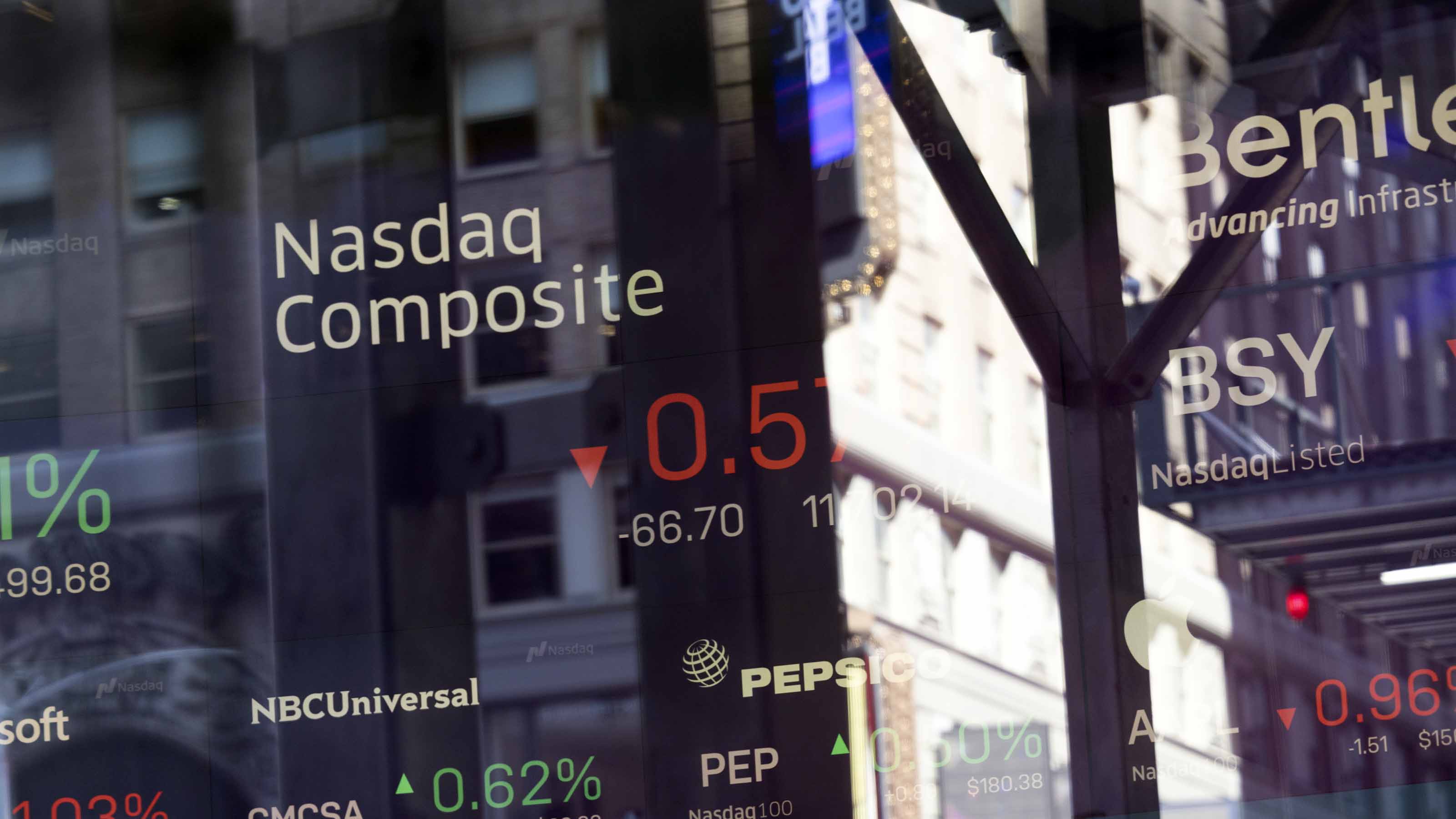
"The Nasdaq" is a term market participants hear several times a day, but what exactly is "the Nasdaq"?
Typically, when an investor says "the Nasdaq," they're referring to the Nasdaq Composite, or IXIC. This is an index that tracks the performance of the Nasdaq Stock Market, an electronic platform used to buy and sell securities. And the Nasdaq Stock Market is run by financial services firm Nasdaq (NDAQ).
There are currently more than 4,100 securities listed on the Nasdaq Stock Market, including Apple (AAPL), Microsoft (MSFT), Amazon.com (AMZN), Nvidia (NVDA), Tesla (TSLA) and Meta Platforms (META).
While most of the investments are stocks, there are also ADRs (American depositary receipts) – which are interests in foreign companies – as well as limited partnerships, exchange-traded funds (ETFs) and tracking stocks, which represent the value of a division or subsidiary.
The Nasdaq Stock Market's market value tops $22 trillion, and over half of this comes from tech stocks. Consumer services stocks make up roughly 19%, while and healthcare comes in around 8%.
The Nasdaq Composite tracks the vast majority of the stocks listed on the Nasdaq Stock Market. It has outperformed the broader S&P 500 on an average annual return basis over the past 10 years (16% vs 13%).
Additionally, there is the Nasdaq-100 Index, also known as the NDX. This is a smaller index that tracks the performance of the 100 largest and most actively traded non-financial stocks on the Nasdaq Stock Market exchange. Its average annual return over the past decade is 19.1%.
How did the Nasdaq start?
The National Association of Securities Dealers (NASD) founded the Nasdaq Stock Market in 1971. At the time, the NASD was the self-regulatory organization for the securities industry. It would later become the Financial Industry Regulatory Authority (FINRA).
At first, the Nasdaq was a system to look up quotes for securities that traded the over-the-counter (OTC) market. This is where traders made transactions in stocks that were not listed on an official exchange.
By the 1980s, the Nasdaq was a fully functioning exchange, but to differentiate itself, it focused on smaller companies, especially those in the tech sector. Companies like Apple, Microsoft, Adobe (ADBE) and Oracle (ORCL) went public on the exchange. Biotech would also be another important category. Some of the exchange's breakout offerings were Amgen (AMGN), Biogen (BIIB) and Genentech.
The reliance on growth stocks often means higher volatility for the Nasdaq Composite. For instance, during the 1990s, the Nasdaq surged at the height of the dot-com bubble, but subsequently crashed in 2000 when it burst.
How does the Nasdaq Stock Market exchange work?
Except for stock market holidays, hours for the Nasdaq exchange are weekdays from 9:30 am to 4 pm Eastern time. However, the exchange provides for premarket trading, which starts at 4 am. There is also after-hours trading that lasts until 8 pm.
The Nasdaq Stock Market exchange is a dealers' market. This means that the exchange designates market makers to facilitate trades and provide liquidity. They have an inventory of certain securities that they can transact with customers or other dealers. A dealer will specify a bid-and-ask for their securities and the spread is the profit they make on a trade.
How are stocks listed on the Nasdaq Stock Market exchange?
Nasdaq has extensive listing requirements for initial public offerings (IPOs), spin-offs, direct listings and special purpose acquisition companies (SPACs). All of these must be in compliance with federal securities laws and state regulations. There are also thresholds for the number of shareholders, equity value and operations.
For companies that are currently listed on the Nasdaq exchange, they must maintain certain requirements and standards. If not, they could be at risk of delisting. When this happens, the stock will often start trading over the counter. This can reduce the value of the shares because of the lower liquidity and lack of analyst coverage.
Why is the Nasdaq important?
The Nasdaq Composite is important because it is one of the three most popular indexes measuring the performance of the U.S. equity market. And because it is so top-heavy in technology stocks, it is typically seen as a barometer of the health of the tech sector.
Similar to the S&P 500, the Nasdaq is market cap-weighted, meaning bigger companies make up a larger portion of the index. With its $3 trillion market cap, Apple has the biggest weighting at about 14%. Pepsico (PEP) is also in the top 10 stocks, though with a market cap of just $256.1 billion, its weighting in the Nasdaq is a much slimmer 1.2%.
Can I invest in the Nasdaq?
While investors cannot trade the Nasdaq Composite directly because it is an index, meaning it strictly measures the average price of the stocks it tracks, there are ways to gain exposure to it.
For one, investors can buy shares in the individual stocks included in the IXIC or the NDX.
Investors can easily purchase ETFs that track the index too. Some of the best ETFs to do this include the Invesco QQQ Trust (QQQ) and the Fidelity Nasdaq Composite Index ETF (ONEQ).
What about Nasdaq as a company?
Nasdaq is much more than its exchanges. The company operates a large set of other businesses. These include:
- Extensive historical and real-time data and analytics services
- Licensing for Nasdaq brands for different financial products like ETFs
- Anti-financial crime software to detect fraud and money laundering
In June, Nasdaq announced an agreement for a $10.5 billion acquisition for Adenza, a developer of risk management and trade processing software for banks and brokers. This deal highlights NDAQ's strategy to diversify the business beyond marketplaces and focus more on selling technology solutions.







